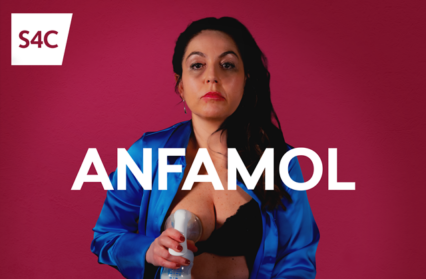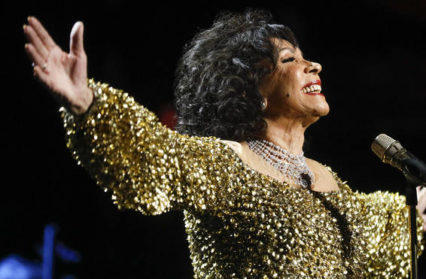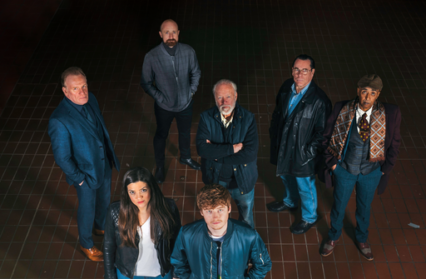Rosie Couch on this year’s television phenomenon Normal People, based on Sally Rooney’s hit novel, which has just taken over Killing Eve as the most streamed BBC drama.
Last summer, browsing the books on offer in Cardiff airport, I picked up Sally Rooney’s Normal People (2018). It was a novel that I’d been meaning to read for a while and, with hours of travel and its attendant stretches of waiting unravelling ahead, my solo trip offered an ideal opportunity. Due to my own ignorance, mostly, I hadn’t realised that much Normal People is set in the same destination to which I was heading. It felt like a strange simultaneity, as I made my way through the novel, to be carried in a literal and literary sense towards Dublin, Ireland. A coincidence, probably, but it was the type that made me want to reach into the darker edges of my unconscious, probing for a forgotten intention that pushed my hand towards the purchase. Like many, I tore through the novel in a day, turning its closing pages shut in the early hours of the morning. Afterwards, I couldn’t sleep. I was staying in a curious little apartment, reached by ascending sloping staircases. It was an old, creaking structure that leant against its neighbours, unsure whether it was doing so out of familiarity, or an inability to stand alone. In one adjacent building, a party shrieked and thumped. As the outside light turned mauve, I was still thinking about the protagonists of Rooney’s text: Marianne Sheridan and Connell Waldron. I was thinking about coincidences, about how we loop in and out of each other’s orbits, sometimes meet, sometimes pass each other by. We forget. We can’t. Mostly, I was thinking about how we lean into each other. How we stray, and how we are drawn back.
In an attempt to avoid a similar bout of nostalgic navel gazing – which, really, has been all too prominent a theme throughout the last few weeks in isolation – I thought I might eke out the episodes of the much-awaited adaptation. Unfortunately, this was not to be. As soon as it arrived online, the series, like the book, was deliciously crammed within the space of a day – or a long afternoon, if we’re being specific. Though, personally, I don’t have a huge investment in the idea of adaptative fidelity – finding instead that the most interesting adaptations stray from, or question the very idea of, an ‘original’ or ‘source’ text – Normal People (2020) does stick pretty closely to the novel on which it is based. Across twelve episodes, each lasting around half an hour, we follow the story of Irish teenagers Marianne (Daisy Edgar-Jones) and Connell (Paul Mescal) as they finish school, leave their hometown of Sligo, and move to Dublin to study at Trinity College.
Throughout these formative years, their connection endures. From clandestine after-school trysts to the sleepy domesticity of university relationships, tensions are left unspoken or blurted in haste. Their paths diverge, cross again, linger. Normal People is, no doubt, concerned with how we hurt both ourselves and the people that we are close to through miscommunications and carefully cultivated distances. Though this theme of feeling and inflicting pain certainly hovers throughout the narrative, its most prominent impression, for me, involved the capacity to want – an insistent desire, slippery, fleeting, necessarily unfulfilled – set alongside the persistence of genuine care and connection. This desire, the pull that keeps Marianne and Connell within each other’s orbit, twists and transmutes. When they are romantically involved with other people, desire is a muted ache, offering the protectivity of friendship, the comfort of shared memory. When they give in to the pull, bodies colliding, desire is excruciating, piercing. As much as Marianne and Connell’s refrain – ‘it’s not like this with other people’ – is an admission, it also feels like a clarification; they hadn’t been imagining it after all.
Despite the proposed singularity of Marianne and Connell’s attraction to one and other, it is this notion of a connection that traverses time and circumstance that I found most compelling on-screen. To watch Normal People is to believe their refrain, to believe in the pull that the characters feel, and the chemistry that they evidently share. I’m going to say it: it was, quite frankly, thoughtless of the BBC to air this adaptation at this tender stage of lockdown. For those of us isolating alone, or even just without a significant other, the days can hold a slow loneliness unquelled, jolts of frustration, cravings for intimacy, touch. This adaptation prompts you to reminisce, drawing heady memories of loves lost back into the present. When you are alone, always just one misguided afternoon can be standing between keeping your dignity and texting the-one-that-got-away, Normal People is, yes, highly irresponsible viewing.
Perhaps isolation is getting to me, or maybe I’ve lived a decidedly sheltered life up until now, sprinkled with average representations of sex in film and television. But there’s something so – dare I say it? – real about the sex scenes in Normal People. It feels like a cliché, and I know that as I type there’s a chorus of people singing the same song of thirst and resonance. That being said, I don’t think I could have written this piece without emphasising just how rare and intense Normal People’s representations of physical contact feel upon watching. Whether they are allowing the pull of a hangover-driven haze, or leaning into the tension of a humid afternoon, it is the nuances of touch, the shock of eye contact, that demand our attention.
During Marianne and Connell’s encounters, consent is easily and naturally confirmed without said exchanges coming across as a contrived attempt at signalling its creators’ own social awareness. The series’ utilisation of Intimacy Coordinator and Movement Director Ita O’Brien no doubt bolstered the portrayal of such highly charged scenes. Broadly, O’Brien’s role involves working to ensure that actors are comfortable and safe when shooting sexual or highly intimate scenes, in line with the ‘Intimacy on Set’ guidelines that she has developed over the past six years. While the believability and palpable energy of these scenes are partly indebted to such guidance, the performances of the two leads are notably, captivatingly, deft. Though the interiority of characterisation is lost in Normal People’s movement from page to screen – from first person to a more realist, objective perspective – Edgar-Jones’s expressive portrayal of Marianne counteracts any sense of diminishment. Even when, throughout sections of the narrative, Marianne’s intent is to cultivate herself as a site for other people’s desires, her underlying thoughts, joys, and insecurities are amplified by Edgar-Jones’s performance – made loud through her huge, searching eyes, her nimbly delivered sentences, her attentive movements.
Additionally, Mescal’s portrayal of Connell stands as a promising television debut. I am going to do my best to veer away from intellectualising what is a clear and obvious crush on Mescal. I’m not sure how successful this attempt will be but, at least, given the glorious display of thirst filling my twitter feed for the last few weeks, I know that I am not alone. Mescal’s performance of Connell will stay with me for some time, and not just because of the sex scenes and the silver chain.
Though Marianne and Connell are both outsiders to a degree – and this, I think, is why they connect, why they feel so incredibly seen by one and other, their moments of eye contact so utterly scorching – the depiction of Connell’s marginality is simultaneously important and refreshing. Though Marianne is comfortably affluent from the outset – with Connell’s mum actually working for her family – Connell works a variety of jobs, mostly in service positions. Though these class differences, surprisingly, are not vocalised between the pair until much later, they are made prominent to viewers much earlier, and magnified through divergent representations of university experience. While Marianne lives alone in a spacious family-owned flat in Dublin, Connell rents a shared bedroom in an evocatively dingy house share. In a shift away from the described and prescribed narrative of finding lifelong friendships and a ceaseless social life, Connell’s characterisation shows us how such a move away from home can leave you feeling completely lost.
In his first English literature seminar, Connell sits silent amidst streams of excessively wordy, somewhat pretentious opinions. In this scene, the tangibility and relatability of Connell’s discomfort owes itself to the strength of Mescal’s performance. When Connell hears tragic news from his hometown about a childhood friend, it is Mescal’s artful portrayal that makes the resultant period of destabilisation and depression so achingly visceral. In another exceptional scene from Mescal, Connell speaks to a counsellor about the way that he has been feeling since the loss of his friend. His face, a grey smudge of silence for this section of the narrative, splits with emotion as he reveals how much he hates his life at university. He wants to go home, but he can’t. Without his friend, earlier ideas of home no longer exist. If Connell isn’t the same person that left for Dublin, can he ever truly return home?
While this scene poignantly drives home the idea that home is mostly comprised of other people, it also highlights the way in which those formative years – holding an apparent plethora of choice – can feel like an ever-narrowing series of corridors. Along them we are swept, never feeling quite ready or informed enough to decide who we would like to be at the end of it – as if the end of it is the point at all. If you don’t like where you are, if you want to go back, perhaps you are the failure; you haven’t lived up to the life. University life, particularly, is a life that promises so much, but is still frustratingly designed for a select few. Connell’s characterisation, and Normal People more broadly, is adept in highlighting how differences in class can affect the experience of these academic corridors in small or cataclysmic ways. From this perspective, Connell’s malaise is less about not living up to university life, and more about how academic spaces and opportunities are still not constructed or maintained with working class people in mind. Despite the fact that Connell’s mother works as a cleaner for Marianne’s family from the outset of the story, their socioeconomic statuses are only voiced after the pressures of such differences has lead to a period of separation. After they are reunited, Marianne asks why their different socioeconomic statuses have not been discussed before. For viewers, such differences have been overt and obvious since the beginning of the series. Through Marianne’s ignorance and eventual recognition, Normal People adroitly, without coming across as cloyingly self-aware, highlights how we might be oblivious to our own areas of privilege, as well as the rifts and fault lines such oversights might form.
Speaking of mawkish admissions of privilege, I’m aware that I fit the demographic of such literature and television fairly neatly. It is, perhaps, not particularly radical to see people who look very much like me, with desires very much like mine, represented on-screen. I adored this adaptation, only slightly more than I loved Rooney’s novel, but, if we take the title of Normal People in its most literal interpretation, then both the book and subsequent television series represent ‘normal people’ to be predominantly white, thin, able-bodied, cisgender, and heterosexual.
Criticisms have also been levelled towards Rooney’s depiction of Marianne’s physical fragility, her disordered eating habits, and the narrative’s various uses of violence – some of which are carried through into the adaptation, some of which are not. Whereas, in Rooney’s novel, the violence Marianne encounters in both romantic and familial relationships also permeates her desire for Connell – who is very much aware of the power he holds over her – the adaptation does mute the possible complexities of their dynamic. Such comparisons probably belong within discussions of adaptation and fidelity – discussions that, as I have mentioned, I don’t find all that interesting unless departures from the ‘original’ text are doing something radical or destabilising. And I’m not sure that this is what the adaptation of Normal People is doing.
That being said, I’m not sure that we should expect it to. Perhaps opinions diverge so severely in discussions of Sally Rooney’s texts (and, as a result, opinions around its adaptation) because of the hype around Rooney, and the expectations that such hype inevitably brings. The idea that Rooney is constructing some kind of zeitgeist of millennial femininity feels as bizarre, to me, as the recently circulated article suggesting that Phoebe Waller-Bridge’s hit series Fleabag is the saviour of contemporary feminism. Sometimes women write hilarious plays that are adapted into award-winning television series. Sometimes women write wonderful, readable novels, also turned into brilliant, on-screen adaptations. While writers and their body of work are not without context, to shoehorn them into a tradition or movement is to lose something, I think. Through such categorisation, the crawling possibilities of reading, watching, and desiring that these texts might indicate, are snipped off at the stems, boxed into definition. And, ultimately, we rarely see cisgender, heterosexual men’s art being treated in the same way.
It’s possible – and, I think, important – to be able to hold criticism in one hand and enjoyment in the other. It’s possible and important to enjoy things without having to intellectualise and thus legitimise them. It is possible and important – now more than ever – to just enjoy things.
Overall, the adaptation of Normal People is significantly beautiful and impactful. Each episode is exquisitely held by Stephen Rennicks’ original score, and accompanied by a perfect soundtrack (who knew that Fionn Regan’s ‘Dogwood Blossom’ could break your heart and complement a sex scene?). As reckless as it was of the BBC to air this series at this particular moment in time, it might give you an extra activity towards which to devote your excess energy. Watching the series, of course, but also the subsequent possibly herculean feat of restraining yourself from sliding into Mescal’s DMs to ask what his favourite colour is, or if he might like to marry you at any point, ever. In the closing episode, Marianne and Connell welcome in the new year with a kiss. This kiss, interspliced with shots of their first, evokes the beginning of their relationship, and the cyclical pull of their ongoing desire for one and other. Even as their prospective futures are blooming ahead, and the possibility of an ongoing relationship is left undetermined, there is the sense that moving forwards will, maybe always, inevitably lead back to each other. Whether or not this series really depicts ‘normal people’, it evokes the memories, nostalgia, and heartache that we associate with certain people. The inevitability of the pull, how it persists, the inability to help ourselves.



 Enjoyed this article? Support our writers directly by buying them a coffee and clicking this link.
Enjoyed this article? Support our writers directly by buying them a coffee and clicking this link.








